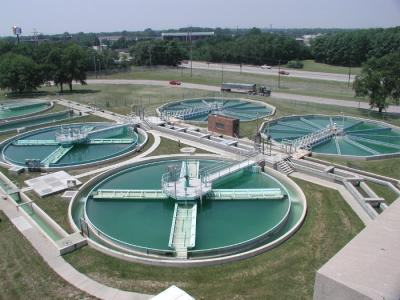Graphene Oxide: Introduction and Market News - Page 23
Graphene-Info's Batteries, Supercapacitors, GO, Lighting, Displays and Graphene Investments Market Reports updated to March 2017
Today we published a new version of all our graphene market reports. Graphene-Info provides comprehensive niche graphene market reports, and our reports cover everything you need to know about these niche markets. The reports are now updated to March 2017.
The Graphene Batteries Market Report:
- The advantages using graphene batteries
- The different ways graphene can be used in batteries
- Various types of graphene materials
- What's on the market today
- Detailed specifications of some graphene-enhanced anode material
- Personal contact details into most graphene developers
The report package provides a good introduction to the graphene battery - present and future. It includes a list of all graphene companies involved with batteries and gives detailed specifications of some graphene-enhanced anode materials and contact details into most graphene developers. Read more here!
Exeter team designs a novel method of engineering computer chips using graphene oxide
Researchers from the University of Exeter have developed a method using graphene oxide flakes that could be used to create the next generation of computers. The Exeter team used microfluidics technology to develop a new method of engineering computer chips that’s easier and less expensive than the current methodology.
The microfluidics approach uses minute channels to control the flow and direction of tiny quantities of fluid. The tests performed at the University of Exeter involved flakes of graphene oxide, mixed into the fluid, which was then mixed together in the channels to create the chips. The researchers used an advanced light-based procedure to facilitate the creation of three-dimensional structures that comprise the resulting chip.
Researchers use graphene oxide to design a low-cost system that captures cells efficiently
Researchers at MIT and National Chiao Tung University have designed a graphene oxide-based system that could make it possible to capture and analyze individual cells from a small sample of blood, potentially leading to very low-cost diagnostic systems that could be used almost anywhere.

The new system, based on specially treated sheets of graphene oxide. The team explains that the key to the new process is heating the graphene oxide at relatively mild temperatures. This low-temperature annealing makes it possible to bond particular compounds to the material's surface. These compounds in turn select and bond with specific molecules of interest, including DNA and proteins, or even whole cells. Once captured, those molecules or cells can then be subjected to a variety of tests.
Zenyatta Ventures' graphite successfully turned into graphene oxide for sensing applications
 Zenyatta Ventures has announced that a team of scientists at Lakehead University in Canada has made significant progress in developing sensing applications with the first graphene oxide (GO) produced from the Company’s Albany graphite.
Zenyatta Ventures has announced that a team of scientists at Lakehead University in Canada has made significant progress in developing sensing applications with the first graphene oxide (GO) produced from the Company’s Albany graphite.
The team has developed a novel one-pot synthesis of fluorine functionalized graphene oxide (F-GO) which can be used in many energy, environmental and electrochemical sensing applications. The produced F-GO has been tested for the simultaneous detection of various toxic metal ions (e.g. mercury, lead, cadmium and copper) and a substantial improvement in the electrochemical sensing performance was achieved in comparison with GO.
Graphene to enable an artificial throat able to generate and detect sound
Researchers at the China-based Tsinghua University have designed an intelligent artificial throat device using laser-induced graphene that can generate and detect sound. Many technologies have been developed to help vocally-impaired people, but most rely on alternatives to speech instead of actual vocal expression. These are also quite expensive and complex. The researchers in this study have developed a one-step process to fabricate a low-cost and wearable LIG artificial throat, that exhibits a high performance for both generating and detecting sounds. It is the LIG within the device, which possesses fantastic thermoacoustic and piezoresistive properties, that enables the functional integration of emitting and detection within a single device.

As a sound source, the device can generate a wide-band sound source with a frequency of 100 Hz to 40 kHz. The device also has a broad frequency spectrum due to resonance-free oscillations from the sound sources. As a detector, the artificial throat device shows a unique response towards different kinds of sounds and throat vibrations. The device can recognize vocal activities such as coughing, humming and screaming at different tones and volumes, through the mechanical vibrations of the throat cords with fine repetition. This recognition is performed with clear distinction due to the differentiation of their specific waveforms. It also has the capability to recognize words and sentences. The different volumes and/or frequencies can be transformed into controllable and pre-designed sounds. The excellent mechanical properties of the device also allow the device to be capable of voice recognition.
Monash University, Ionic Industries and Clean TeQ receive grant to develop GO-based water-treatment technology
Clean TeQ Holdings, along with Monash University and Ionic Industries, received a grant of $632,285 AUD (almost $500,000 USD) from the Australian Government under the Cooperative Research Centre’s Project (CRC-P) program, to develop energy efficient wastewater treatment technology using graphene oxide technology. The new project is scheduled to commence in March 2017.

Researchers at Monash University have developed a method of producing graphene oxide which is suitable for the production of water and wastewater filtration products. Clean TeQ has already commercialized its Continuous Ionic Filtration (CIF®) technology which is used for water and wastewater filtration. The use of graphene oxide adsorbents in Clean TeQ ‘s process will allow the capture of non-ionic species and thereby extend the range of waters than can be successfully treated.
Nippon Shokubai succeeds in mass production test of GO-based materials
 Nippon Shokubai, a Japan-based global materials provider, has announced its success in mass production tests of graphene oxide-based materials. The production volume attained in the mass production test was reportedly improved dozens of times as much as that attained at laboratory, and Nippon Shokubai will start to provide graphene oxide-based materials as samples for application development.
Nippon Shokubai, a Japan-based global materials provider, has announced its success in mass production tests of graphene oxide-based materials. The production volume attained in the mass production test was reportedly improved dozens of times as much as that attained at laboratory, and Nippon Shokubai will start to provide graphene oxide-based materials as samples for application development.
The graphene oxide-based materials are lamellar carbon compounds with the approximately 1nm thickness and the company expects them to be suitable for various functional materials, such as lubricants, water treatment membranes, and catalysts. Nippon Shokubai stated that it has resolved various problems relating to chemical reactions of the production process and succeeded in the mass production test by utilizing its control technology for stable proceeding of chemical reactions in collaboration with Okayama University which retained academic knowledge about reaction mechanism of graphene oxide.
A look into Ionic Industries graphene oxide technology and business
 Ionic Industries is an Australia-based graphene developer that was spun-off from Strategic Energy Resources (SER still holds 20% in Ionic) in 2015. Ionic Developed a proprietary Graphene Oxide production process and is developing GO-based materials and applications.
Ionic Industries is an Australia-based graphene developer that was spun-off from Strategic Energy Resources (SER still holds 20% in Ionic) in 2015. Ionic Developed a proprietary Graphene Oxide production process and is developing GO-based materials and applications.
Simon Savage, Ionic's Managing Director, was kind enough to discuss the company's technology and the status of Ionic's GO applications.
Exeter team develops a simple and cheap way to make graphene devices
A team of researchers from Exeter’s Centre for Graphene Science have developed a method for creating entire device arrays directly on the copper substrates used for the commercial manufacture of graphene. Complete and fully-functional devices can then be transferred to a substrate of choice, such as silicon, plastics or even textiles.
This new approach is simpler than conventional ways of producing graphene-based devices, and could lead the way to using simple and cheap-to-produce graphene devices for various applications, from gas and bio-medical sensors to touch-screen displays.
Graphenea announced price reductions
 Graphenea, a company focused on the production of high quality graphene for industrial applications, has announced a significant price reduction. The price of CVD films has dropped 15% on average this January, and the price of graphene oxide (GO) is being reduced by 30% on average.
Graphenea, a company focused on the production of high quality graphene for industrial applications, has announced a significant price reduction. The price of CVD films has dropped 15% on average this January, and the price of graphene oxide (GO) is being reduced by 30% on average.
CVD films are being offered on the copper substrates that they are grown on, in sizes ranging from 10x10 mm to 4 inch diameter. The same high quality graphene films are also available on SiO2/Si, quartz, PET, suspended on TEM grids and cavities, and on custom substrates as required. For customers wishing to do their own transfer, CVD graphene is also available on polymer films for easy transfer.
Pagination
- Previous page
- Page 23
- Next page


